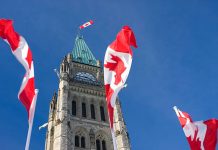April: +$4.9Bn, Prior: +$4.9Bn Exports +2.5%, Imports +2.8%
- In April, Australia’s trade surplus printed at $4.9bn, unchanged from March and only a fraction below the record high of $5.0bn in February.
- The April outcome was broadly in line with market expectations but fell a little short of our forecast (market median $5.0bn and Westpac $5.4bn).
- Imports rebounded from a softer showing in March, albeit by a little more than we anticipated, up 2.8% (+$1.0bn) vs a forecast +2.3%.
- Exports advanced, up 2.5% (+$1.0bn), a little shy of our forecast +3.2%.
- The trade surplus has climbed to be at record highs in 2019. The key dynamic driving the larger surplus is the boost to export earnings from higher commodity prices, notably iron ore following the tailings dam disaster in Brazil.
- On the back of these larger trade surpluses, the current account deficit has narrowed sharply to be at historic lows, coming in at only 0.6% of GDP in the March quarter 2019, the smallest deficit since 1979 Q4 (also a -0.6% of GDP) and before that, 1975 Q2, which was a surplus, +0.2% of GDP.
- Higher commodity prices are boosting mining profits and in turn tax revenues, thereby providing the Federal government with additional flexibility on fiscal policy.
In the month of April, the import bill rose by $1.0bn, more than reversing a $0.5bn decline in March.
More generally, imports volumes have been choppy around a soft trend against the backdrop of sluggish domestic demand and with a lower dollar making import services more expensive (including overseas travel).
In the March quarter, import volumes edged 0.1% lower to be 0.5% below the level of a year earlier. This includes softness in service imports, down 1.4% in the quarter and 0.8% lower over the year.
Turning to exports, earnings increased by 2.5% in the month of April to be 17.2% above the level of a year ago. In the month, exports were led higher by metal ores, up $1.4bn on stronger iron ore shipments and higher iron ore price. The iron ore spot price jumped to over US$90/t in April and has moved higher since then.
In other export detail for April: gold rose, up by $0.3bn, lifting from a relatively low base; coal disappointed, down $0.7bn; and fuels (including LNG) also moderated, down $0.2bn In the March quarter, export volumes resumed their upward trend, advancing by 1.0%. That follows a disappointing second half to 2018, when export volumes slipped by 0.5%, dented by the impacts of the drought and supply disruptions in the resources sector. Looking ahead, LNG shipments have further upside as new capacity comes on stream and the lower dollar, as well as strong demand from the Asian region, is driving strong growth in service exports, with volumes up 6.6% over the past year.


















